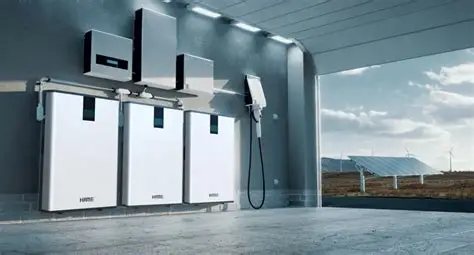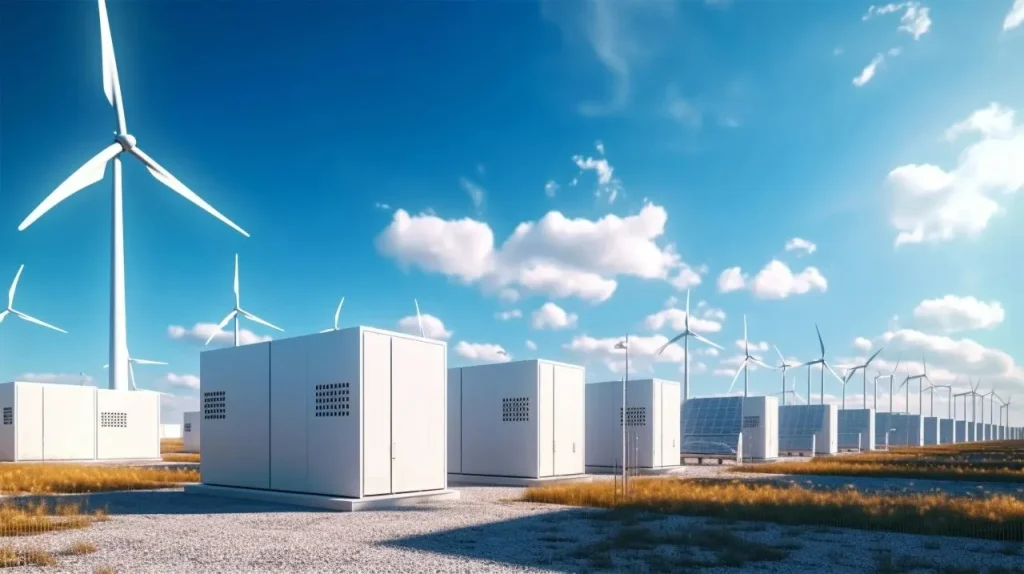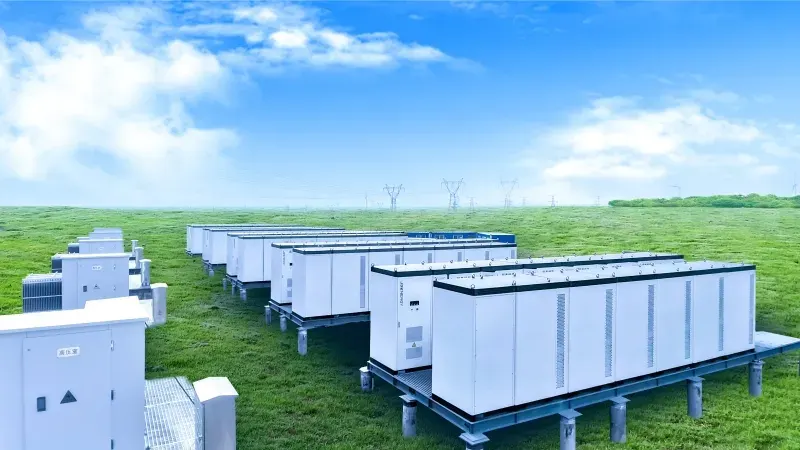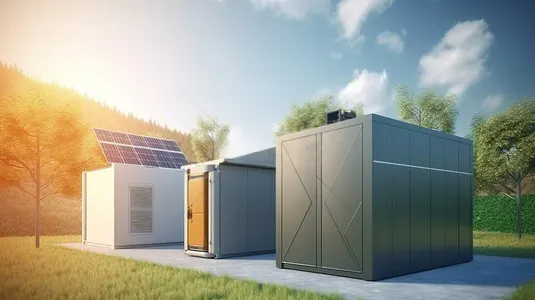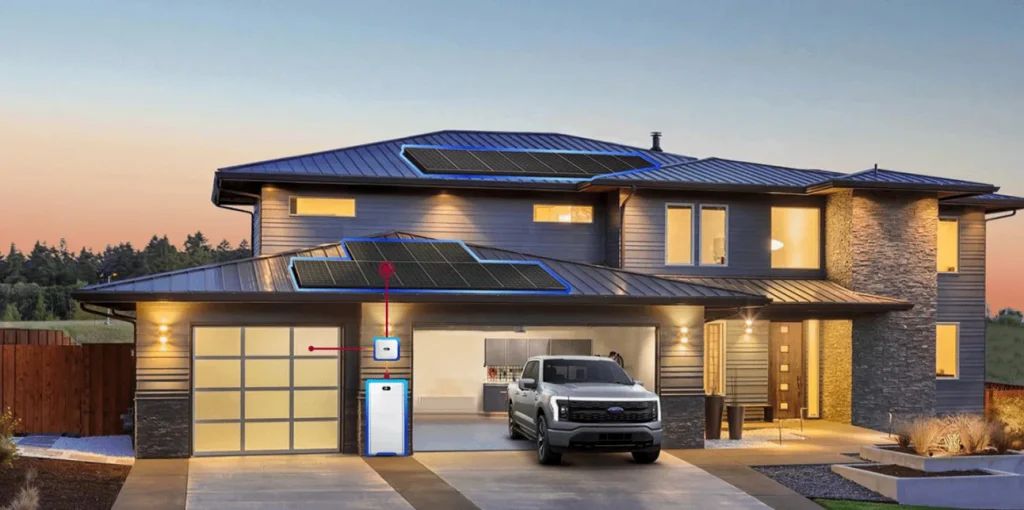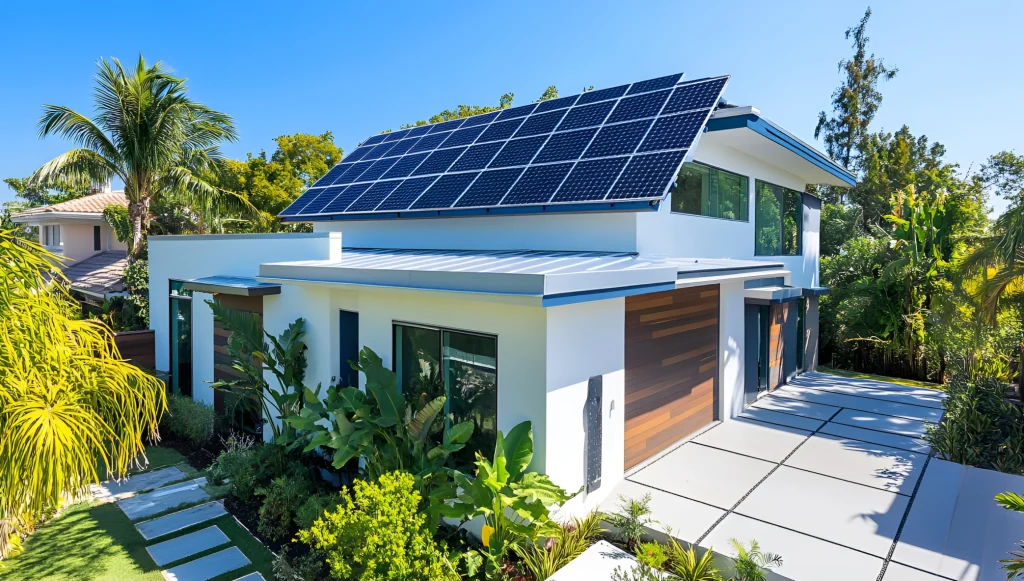When setting up home energy storage systems, most people run into the same headaches: either it takes up too much space (especially for small apartments), installation is a hassle that requires electricians to spend half a day on, or it’s too one-dimensional—clashing with your home decor and coming in ill-fitting capacities (either too small to meet needs or too large to waste money on). Recently, I came across a “versatile” all-in-one home energy storage inverter that combines floor-standing and wall-mounted installation, integrates energy storage and inversion functions, and even supports real-time monitoring and custom design. Today, let’s dive into whether it can solve these pain points for us.
1. Dual-Purpose: Floor-Standing & Wall-Mounted – Fits Any Apartment Size
First, let’s talk about installation methods. Many people overlook this before buying an energy storage device, only to find it “incompatible” later: Apartment dwellers want to install it, but traditional floor-standing units take up as much space as a small cabinet, making it hard to move around. Villa owners need high capacity but worry that wall-mounted units can’t bear the weight, leaving them feeling unsafe.
The most thoughtful feature of this device is its “dual-purpose design” – it can be mounted on the wall or placed on the floor. Let’s start with wall mounting: It’s compact, with a thickness nearly 1/3 slimmer than regular energy storage units. All you need is a load-bearing wall (most load-bearing walls can handle ≥50kg, such as the wall behind your TV or entryway wall from renovation) and some expansion screws to secure it. You can hang it on the side of a balcony or in a living room corner, taking up almost no floor space. Even renters can install it—just remove it when moving without damaging the walls.
If you have more space at home or need higher capacity (e.g., for households with EV chargers or central air conditioning), floor-standing placement is a better choice. It has non-slip pads on the bottom, so you don’t need extra fixation as long as it’s on a flat surface (like a storage room or equipment balcony). What’s more, high-capacity versions have heat dissipation designs optimized for floor placement, ensuring safety during long-term use. A neighbor of mine lives in a 120㎡ three-bedroom apartment. Previously, her traditional energy storage unit took up half her storage cabinet, but after switching to this wall-mounted model, the freed-up space now holds seasonal clothes. She said, “I never thought installing an energy storage system could free up storage space like this.”
2. Integrated Energy Storage + Inverter: Saves Money, Reduces Malfunctions – Easy for Beginners
Most traditional home energy storage systems require buying and installing “energy storage batteries” and “inverters” separately, which comes with many troubles: First, it’s more expensive—buying two separate devices costs 20%-30% more than an all-in-one unit. Second, it takes up more space—you need to find spots for both devices, and the wiring has to match, leaving things messy. Worst of all, the risk of malfunctions is high: Loose wiring or compatibility issues between the two devices can cause shutdowns. A friend of mine once had his fridge contents spoil because his inverter and battery were incompatible, so the storage system didn’t kick in during a power outage.
This all-in-one device integrates “energy storage battery” and “inverter” into a single casing, solving these problems. First, it saves money and space: One device replaces two, costing less than separate purchases and taking up half the space of traditional dual-device setups. For example, a traditional system needs 60cm×40cm of space, while this one only requires 30cm×35cm—easy to fit even in small apartments.
More importantly, it’s “reliable”: The integrated design reduces wiring ports, cutting down malfunction points by 80% compared to separate systems. The manufacturer says its average fault-free operation time is 2-3 years longer than that of split systems under normal use. Plus, its integrated solution has undergone repeated testing, so you don’t have to worry about compatibility—beginners won’t face the issue of “buying the wrong model.” A colleague of mine just installed it; he said, “I thought I needed to know about circuits to set up energy storage, but after unpacking this, there’s only one wiring terminal—just plug it in and it works.”
3. Real-Time Monitoring via LCD Screen: No Technical Knowledge Needed to Check Status
Many people “set and forget” their energy storage devices after installation, only realizing something’s wrong when the system fails to work during a power outage—either the battery is dead or the device is faulty. It’s not that they don’t want to monitor it; traditional devices either lack monitoring functions or require installing an app and connecting to WiFi, which elderly users often struggle with.
This device has a high-definition LCD screen on the front. No need to connect to a phone—just turn it on, and you’ll see real-time data: current charging power (if you use solar panels, you can check how much electricity they generate), discharge power (which appliances it’s powering), remaining battery capacity (displayed as a percentage for clarity), and device status alerts. If a malfunction occurs, the screen shows an error code directly (e.g., “E1” for unstable voltage, “E2” for heat dissipation issues). You don’t need to dig out the manual—just report the code to after-sales service, and they’ll fix it quickly.
My mom used to worry about “electric leakage from the energy storage device.” Now she checks the screen every morning, and seeing the “normal operation” prompt puts her at ease. During a recent power outage, she saw the screen showed 80% battery left, so she didn’t panic. She even said, “This is enough for us to use for a day—no need to rush for candles.” This “visible, tangible” monitoring is much more practical than a phone app, especially for households with elderly family members.
4. Quick Plug-and-Play Installation: No Need to Wait for Electricians – Done in 1 Hour
Installing traditional energy storage systems requires at least two electricians to come over for wiring, debugging, and fixation, taking most of the day and costing 500-800 yuan in installation fees. This device’s “home-friendly plug-and-play” design minimizes installation difficulty—if you can use a screwdriver, you can install it yourself. Even if you hire an electrician, it’ll be done in 1 hour.
Let me break down the installation steps—it’s really simple:
- Choose a location: For wall mounting, pick a load-bearing wall and avoid heat sources like AC outdoor units or water heaters. For floor placement, use a flat surface and leave 10cm of space around for heat dissipation.
- Secure the device: For wall mounting, use the included expansion screws—drill 4 holes and fix it. For floor placement, no fixation is needed; just set it firmly.
- Wiring: There are only two terminals on the back—one for the home power supply (220V, same as the socket for your AC) and one for the load (e.g., the main socket for your fridge or TV). No need to distinguish between positive and negative poles—just plug them in.
- Power on and debug: Plug in the power, press the power button, and if the LCD screen shows “normal,” the installation is complete.
I helped a friend install it once, and it only took 40 minutes from unpacking to power-on. He said, “It’s easier than installing a washing machine, and I saved hundreds on installation fees.” Plus, the manufacturer provides a graphic manual with diagrams for each step—even renovation newbies can follow it.
5. Customizable Design: Not Just Practical – Matches Your Home Decor
Many people find energy storage devices “ugly”—square black boxes that stick out like a sore thumb in the living room, clashing with Nordic, Chinese, or other home styles. This device’s “customizable design” solves this problem perfectly, with a wide range of customization options to meet different needs:
- Color customization: The default colors are white and gray, but you can choose a color that matches your decor. For example, light wood color for a 原木 – style (log-style) home, or matte black for an industrial-style space. I once saw a user who customized a mint green unit—placed on the balcony, it blended perfectly with the green plants; you’d never guess it was an energy storage device.
- Capacity customization: Capacities range from 5kWh to 15kWh. A 3-person household that only powers the fridge and TV usually needs 5kWh. For households with EV chargers, central air conditioning, or those wanting to power all appliances during outages, 10kWh or more is better. No need to buy an oversized capacity (like “using a sledgehammer to crack a nut”) or worry about insufficient capacity—choosing the right fit saves the most money.
- Logo customization: For corporate purchases (e.g., employee benefits or project supporting equipment), you can print your company logo to enhance brand image. I once worked with a decoration company that customized a batch of these devices with their logo for clients’ new homes. Clients found it thoughtful and even referred new business to them.
Customization doesn’t take long—the manufacturer says color and logo customization takes 7 days for delivery, and capacity customization takes up to 10 days, much faster than most customized products. What’s more, there’s no extra charge for customization: Color and logo customization are free as long as the capacity is within the regular range. Only for capacities over 15kWh (large-capacity models) is a small cost added, making it highly cost-effective.
6. Who Is It For? Most Cost-Effective in These Scenarios
After talking about so many advantages, you might wonder: “Is this device suitable for everyone?” Actually, no—it’s more ideal for users in these scenarios:
- Small apartment dwellers/renters: The wall-mounted design saves space; it’s installable in rentals and removable when moving, so no money is wasted.
- Households with elderly members: The LCD screen for real-time monitoring is easy to operate, allowing the elderly to use it independently.
- Budget-conscious users: The integrated design costs less than split systems; plug-and-play saves installation fees; customized capacity avoids waste.
- Users who care about home decor: Color customization helps it blend into your interior without ruining the overall aesthetic.
- Users needing high reliability: For example, rural households (with frequent power outages) or households with critical appliances (e.g., medical equipment). The integrated design has fewer malfunctions, ensuring peace of mind during outages.
If your needs fit these scenarios, this device is definitely worth considering. For industrial scenarios like large factories or shopping malls, however, you may need larger industrial-grade units, so this model isn’t the best fit.
7. FAQs: I’ve Asked the Manufacturer These Questions
Finally, let’s sort out some common questions—these are ones I asked the manufacturer, and their answers are straightforward:
Q1: What if the wall can’t bear the weight for wall mounting?A1: A load capacity of ≥50kg is recommended, which most load-bearing walls can meet. For lightweight walls, you can install a load-bearing bracket (provided by the manufacturer), and it will still work.
Q2: How often do I need to replace the battery?A2: The battery has a lifespan of 8-10 years. When it expires, you can replace just the battery instead of the entire device—saving money compared to buying a new system.
Q3: Can I expand the capacity later after customizing it?A3: Yes, the device supports modular expansion. For example, if you choose 5kWh now, you can buy an additional battery module to expand capacity later—no need to replace the main unit.
Q4: Will the device switch to backup power automatically during an outage?A4: Yes, it switches in 0.5 seconds after a power outage. Lights and fridges at home won’t cut out, making it feel like there’s no outage at all.
Conclusion: For Energy Storage, Practicality Beats “Gimmicks”
Nowadays, there are more and more energy storage devices on the market—some highlight “smart apps,” others boast “super large capacity.” But many of these features are impractical: Apps are hard for the elderly to use; oversized capacities are useless for small apartments and just waste money.
This dual-purpose (floor-standing & wall-mounted) integrated energy storage inverter doesn’t have fancy features, but it excels at meeting practical needs: saving space, easy installation, accessible monitoring, and customization. If you’re looking for a home energy storage device that “takes up little space, is easy to install, and reliable to use,” this one is worth a try. Especially its customizable capacity and color—letting the device blend into your life instead of being an “eyesore” at home.
If you want to know the specific price for different capacities or see samples of custom colors, click the link below. The manufacturer will arrange a consultant for one-on-one communication and even provide free on-site measurement for installation locations—saving you time and hassle.


